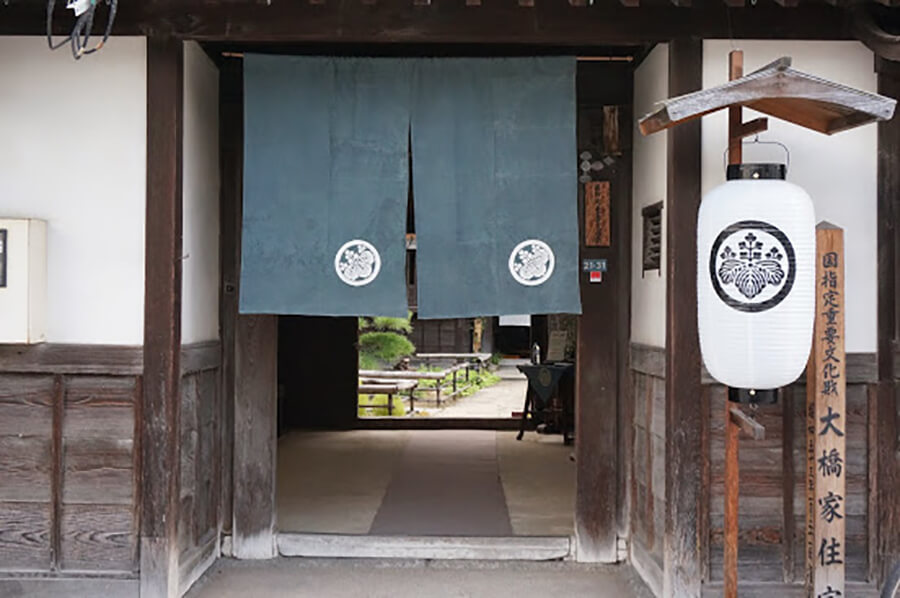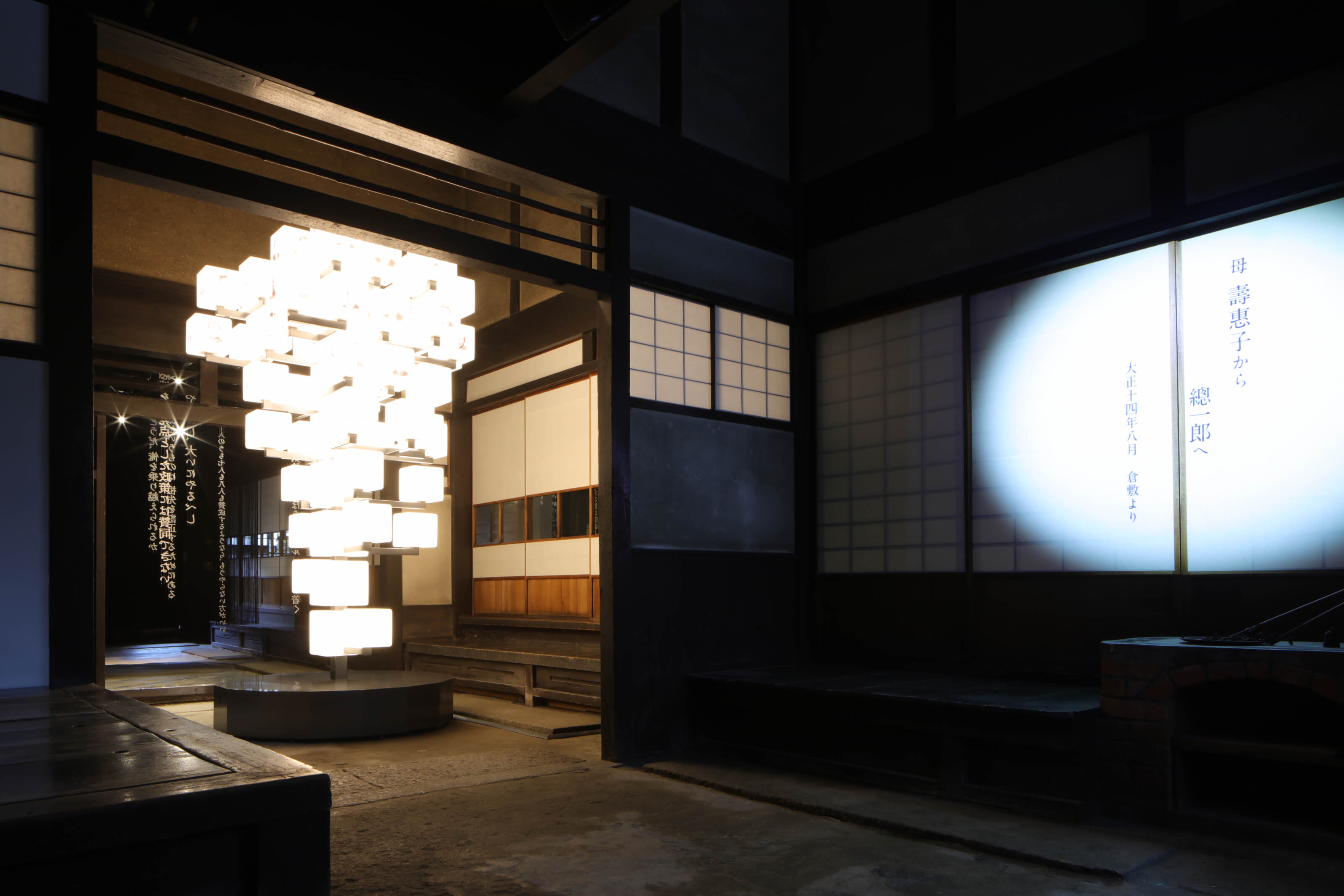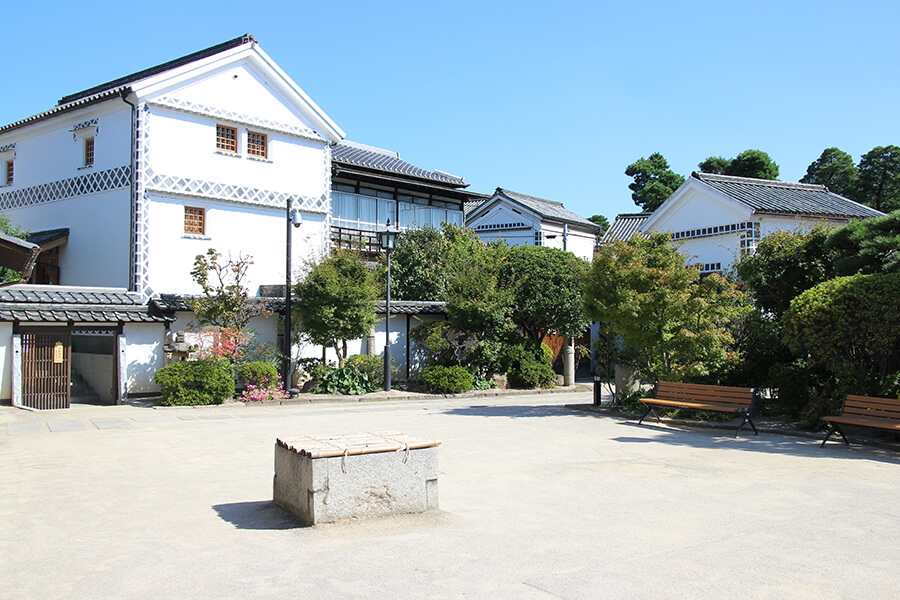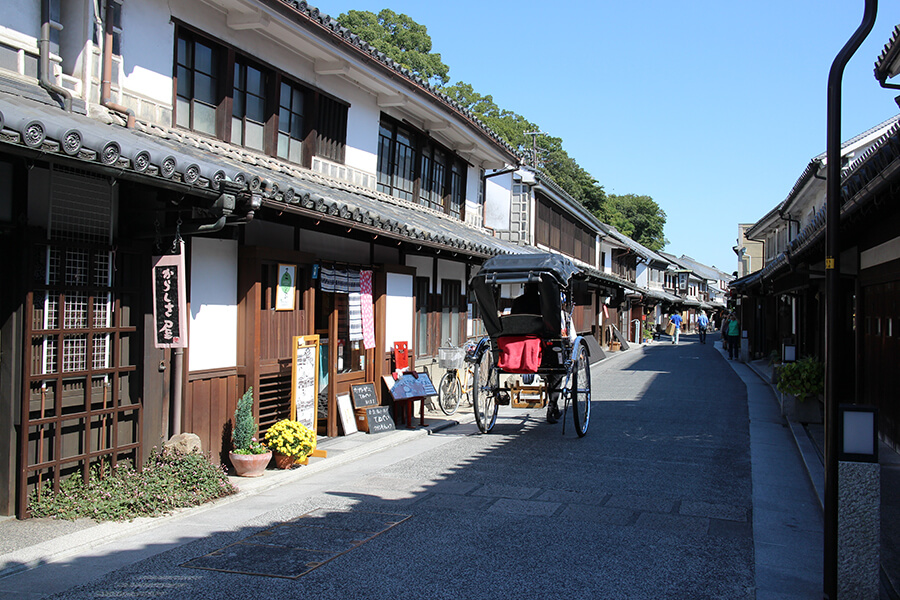TOURISM
INFORMATION
- HOME
- Tourism Information
- Nationally designated important cultural property Ohashi family residence

The Ohashi Family Residence is a beautiful townhouse unique to Kurashiki that has been designated an Important Cultural Property. Its unique layout features a row house facing the main road, with the main house on the inside separated by a front yard, and the main entrance runs through the row house. The main house is a multi-story building with a hip-and-gable roof and real tile roof, with a room and a cabinet in the attic, Kurashiki lattice on the first floor and Kurashiki windows on the second floor. The rice storehouse and internal structure are built using earthenware and feature "namako walls," and there is a single-story sitting room to the east. It is a simple but beautiful townhouse unique to Kurashiki.
The Ohashi family were large landowners in Kurashiki in the late Edo period who made their fortune through the development of salt fields and new rice fields. Together with the Ohara family, they formed an emerging power group known as "Shinroku" and reached the height of their prosperity.
The Ohashi Family Residence gives us a glimpse into the high-class and dignified lifestyle of the Ohashi family and the splendor of the prosperity of the Shinroku era at that time.
| address | 3-21-31 Achi, Kurashiki City, Okayama Prefecture |
|---|---|
| telephone number | 086-422-0007 |
| Opening hours | 9:00-17:00 (until 18:00 on Saturdays from April to October) |
Access Map
OTHER
INFORMATION
-
Talking Place Oharamoto Residence

The "Katariza Ohara Residence (former Ohara family residence)" is a nationally designated Important Cultural Property, which was gradually renovated from the late Edo period through to the Taisho period, and took on its current appearance by the early Meiji period. Construction of the main house began in 1795, and the tatami room area was later added. Beyond that is a large garden, and behind the main house are a row of storehouses, which also serve as fire prevention measures.
VIEW MORE
The main house is two-story with a traditional Japanese tile roof and features Kurashiki windows and lattices. The storehouse is built of earthen walls with tiles attached to the lower part of the exterior and finished with namako walls.
The Former Ohara Residence is a building that characterizes the landscape of Kurashiki's townscape and is a beautiful townhouse architecture unique to Kurashiki.
In the Meiji era, the Ohara family participated in the establishment of Kurashiki Spinning Company (Kurabo), which later grew into what could be called a zaibatsu conglomerate, building numerous facilities including Kurabo Central Hospital (now Kurashiki Central Hospital) and the Ohara Museum of Art.
It is currently open to the public as an exhibition and exchange facility called "Katariza Ohara Hontei," and in addition to the Ohara family's collection and artworks, it introduces the journey of eight generations of the Ohara family through creative exhibits such as "Falling Words" and "Cube Tree." There is also a book cafe surrounded by the Ohara family's collection of books. -
Kurashiki Story Museum

Kurashiki Monogatarikan was constructed in the mid-Edo period, and its dignified Nagayamon gate on the south side, the alley on the west side, and the four storehouses create a beautiful and calm atmosphere, conveying the atmosphere of the Edo period to the present day.
VIEW MORE
The Kurashiki Story Hall was renovated by the city of Kurashiki from the former Higashi Ohashi family home, and opened in 2009 as a tourist hub to improve the mobility of tourists visiting Kurashiki, and as a place for cultural exchange and activities for local residents. As it is located at the entrance to the scenic area, it plays the role of first conveying the "Kurashiki-ness" to tourists visiting the scenic area.
The main Nagayamon gate is used as a tourist information corner, and the first floor of the two-story wooden main building in the center of the site houses an exhibition corner that conveys the traditional townscape of Kurashiki. Other facilities include a multi-purpose hall, exhibition room, and cafe. -
Kurashiki Higashimachi

As it continues from Honmachi Street, Higashimachi Street is also a street where you can feel the exquisite harmony between history and everyday life. It has a more relaxed atmosphere than Honmachi Street and is less touristy, so you can get a glimpse of the quiet lives of the people. Starting with the grand presence of the Kusunoki family, a kimono merchant, the eaves roof signs and remnants of wells that can be seen here and there in the old townscape, this is a street where you can feel the unique charm of Kurashiki.
VIEW MORE
The Kurashiki Byobu Festival is held every year in mid-October, attracting many visitors.

